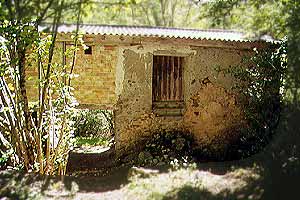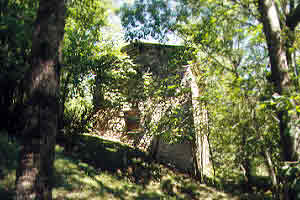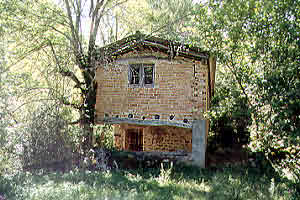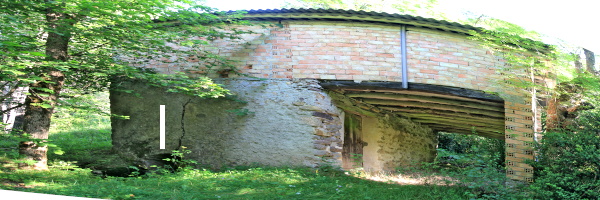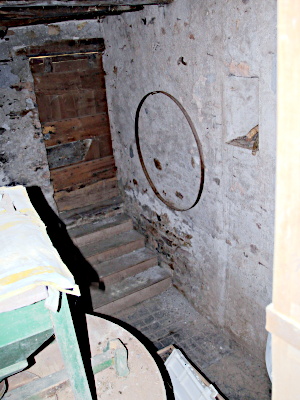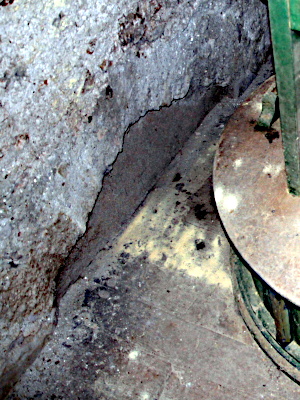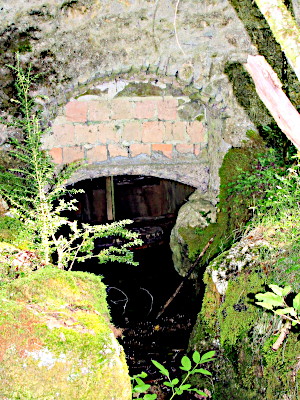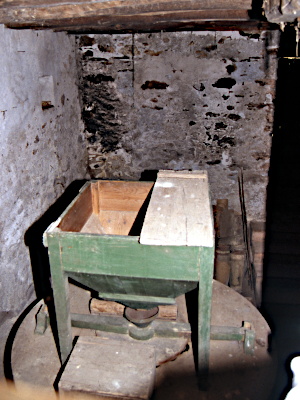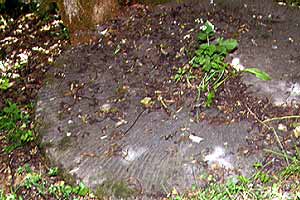Path: Introduction -
Visit the mills; catalogue - Alins (Ribagorza)

Mills in Alto Aragón - harinero
Alins

Alins is a village in the Ribagorza region and
not near any of the main roads. It is situated on a line between Castejón de Sos and Pont de Suert a
bit to the south from Laspaúles. The corn mill, however, is best reached from the south by
taking the A-1605 running from Graus, over La Puebla de Roda and Bonansa towards the N-230 and
Pont. You'll find the mill in the bend of the road at the 46 km mark hidden between
the trees. The mill took its water from the Río Isábena.
Pictures: 6.viii.2006, 29.vii.2020
